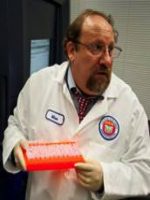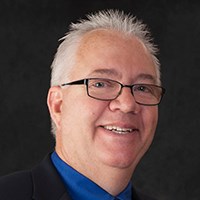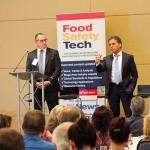Siragusa/Marshall: Will the extensive data obtained on Salmonella be fuel to finally develop a sequence based serotyping surrogate for the genus?
Brown/Allard: Yes, the FDA already collaborates with University of Georgia investigators using a program called SeqSero that rapidly identifies serotype from the draft WGS. Other software tools are also being built to go from sequence to serotype.
Siragusa/Marshall: Currently there are a few foodborne pathogens that comprise the GenomeTrakr program’s database. How easy would it be to expand the scope of microorganisms under the GenomeTrakr umbrella? For instance, would a private company be able to use the GenomeTrakr resources to build their own private database? Will the realm ever be expanded to mycotoxigenic fungi or foodborne viruses?
Brown/Allard: Yes, it is relatively easy to take any of the data that is publicly available in GenomeTrakr and download the data to build a private database to add value or to provide additional tools to a private user group. This is already happening with GenomeTrakr data. In addition, the NCBI mechanisms are not species specific, and so any private group can build a bioproject of draft WGS for any species that they wish. To use the NCBI bioproject tools the data would have to be publicly released after a year. Similarly, the NCBI pathogen detection website, which does QA/QC and builds a new phylogenetic tree every time there is new data, is currently open to any human pathogen. The main constraint to building a new species database is that the people who want to build such a database would need to speak to NCBI representatives to convince them that enough data was going to be uploaded and released publicly and that there would be enough use to justify NCBIs efforts to validate and test these new pipelines. Industry should also ask about non-pathogens such as spoilage organisms, although this may be out of the scope of NCBI. The FDA plans to expand to foodborne virus such as Hepatitis A, although fungi may have lower priority. The FDA is willing to work with industry to identify and populate mutually beneficial databases that the industry will use to improve food safety. For example, the FDA has suggested that there may be value of typing foodborne pathogens that have shown known resistance to cleaners and sterilizers with the goal of understanding how these pathogens are avoiding the preventative controls that are put in place to keep them out of the food supply. Better characterization of the genes responsible for resistance may lead to rapid PCR tools to understand and screen for the ability of pathogens to persist in the environment.
Siragusa/Marshall: We would like to end with the following question; why should food producers and processors embrace GenomeTrakr and become a part of it (i.e., Why should a company send in its pathogen isolates)?
Brown/Allard: The FDA understands that most food producers will not likely send their strains to the FDA or make WGS data they have generated publicly available due to a concern for legal liability risks. This then highlights the importance of third-party members providing assistance to the food industry to utilize the power of WGS data for understanding their own processing facilities and supply chains. The FDA is committed to support industry adoption of these WGS methods to improve food safety, which can be accomplished by data sharing, methods validation and data interpretation and education.
Siragusa/Marshall: Thank you Drs. Allard and Brown. That was most informative and we appreciate your sharing this knowledge.
Readers, we hope this interview will be useful to your work and knowledge base. Obtaining whole genome sequences of organisms is a routine service offered by many labs worldwide for reasonable costs. At the current time, there are no standardized methods, but we are informed that it is possible at some time in the future that an official method of analysis (OMA) will be formulated, similar to our other cultural tools, making WGS a tool available on a routine rather than special project basis with more comparable results. For more information on the GenomeTrakr Network of labs visit the GenomeTrakr Network.
As always, please contact either Greg Siragusa or Doug Marshall with comments, questions or ideas for future Food Genomics columns.
Resources
- Allard, M. W., Strain, E., Melka, D., Bunning, K., Musser, S. M., Brown, E. W., & Timme, R. (2016). Practical Value of Food Pathogen Traceability through Building a Whole-Genome Sequencing Network and Database. Journal of Clinical Microbiology, 54(8), 1975–1983. https://doi.org/10.1128/JCM.00081-16
- Burall, L. S., Grim, C. J., Mammel, M. K., & Datta, A. R. (2016). Whole Genome Sequence Analysis Using JSpecies Tool Establishes Clonal Relationships between Listeria monocytogenes Strains from Epidemiologically Unrelated Listeriosis Outbreaks. PloS One, 11(3), e0150797. https://doi.org/10.1371/journal.pone.0150797
- Nutrition, C. for F. S. and A. (n.d.-a). Whole Genome Sequencing (WGS) Program – GenomeTrakr Fast Facts [WebContent]. Retrieved May 4, 2017, from https://www.fda.gov/Food/FoodScienceResearch/WholeGenomeSequencingProgramWGS/ucm403550.htm
- Nutrition, C. for F. S. and A. (n.d.-b). Whole Genome Sequencing (WGS) Program – Proactive Applications of Whole Genome Sequencing Technology [WebContent]. Retrieved May 4, 2017, from https://www.fda.gov/Food/FoodScienceResearch/WholeGenomeSequencingProgramWGS/ucm422077.htm
- Zhang, S., Yin, Y., Jones, M. B., Zhang, Z., Deatherage Kaiser, B. L., Dinsmore, B. A., Deng, X. (2015). Salmonella serotype determination utilizing high-throughput genome sequencing data. Journal of Clinical Microbiology, 53(5), 1685–1692. https://doi.org/10.1128/JCM.00323-15
About the Interviewees
Marc W. Allard, Ph.D.
 Marc Allard, Ph.D. is a senior biomedical research services officer specializing in both phylogenetic analysis as well as the biochemical laboratory methods that generate the genetic information in the GenomeTrakr database, which is part of the NCBI Pathogen Detection website. Allard joined the Division of Microbiology in FDA’s Office of Regulatory Science in 2008 where he uses Whole Genome Sequencing of foodborne pathogens to identify and characterize outbreaks of bacterial strains, particularly Salmonella, E. coli, and Listeria. He obtained a B.A. from the University of Vermont, an M.S. from Texas A&M University and his Ph.D. in biology in from Harvard University. Allard was the Louis Weintraub Associate Professor of Biology at George Washington University for 14 years from 1994 to 2008. He is a Fellow of the American Academy of Microbiology.
Marc Allard, Ph.D. is a senior biomedical research services officer specializing in both phylogenetic analysis as well as the biochemical laboratory methods that generate the genetic information in the GenomeTrakr database, which is part of the NCBI Pathogen Detection website. Allard joined the Division of Microbiology in FDA’s Office of Regulatory Science in 2008 where he uses Whole Genome Sequencing of foodborne pathogens to identify and characterize outbreaks of bacterial strains, particularly Salmonella, E. coli, and Listeria. He obtained a B.A. from the University of Vermont, an M.S. from Texas A&M University and his Ph.D. in biology in from Harvard University. Allard was the Louis Weintraub Associate Professor of Biology at George Washington University for 14 years from 1994 to 2008. He is a Fellow of the American Academy of Microbiology.
Eric W. Brown, Ph.D.
 Eric W. Brown, Ph.D. currently serves as director of the Division of Microbiology in the Office of Regulatory Science. He oversees a group of 50 researchers and support scientists engaged in a multi-parameter research program to develop and apply microbiological and molecular genetic strategies for detecting, identifying, and differentiating bacterial foodborne pathogens such as Salmonella and shiga-toxin producing E. coli. Brown received his Ph.D. in microbial genetics from The Genetics Program in the Department of Biological Sciences at The George Washington University. He has conducted research in microbial evolution and microbial ecology as a research fellow in the National Cancer Institute, the U.S. Department of Agriculture, and as a tenure-track Professor of Microbiology at Loyola University of Chicago. Brown came to the Food and Drug Administration in 1999 and has since carried out numerous experiments relating to the detection, identification, and discrimination of foodborne pathogens.
Eric W. Brown, Ph.D. currently serves as director of the Division of Microbiology in the Office of Regulatory Science. He oversees a group of 50 researchers and support scientists engaged in a multi-parameter research program to develop and apply microbiological and molecular genetic strategies for detecting, identifying, and differentiating bacterial foodborne pathogens such as Salmonella and shiga-toxin producing E. coli. Brown received his Ph.D. in microbial genetics from The Genetics Program in the Department of Biological Sciences at The George Washington University. He has conducted research in microbial evolution and microbial ecology as a research fellow in the National Cancer Institute, the U.S. Department of Agriculture, and as a tenure-track Professor of Microbiology at Loyola University of Chicago. Brown came to the Food and Drug Administration in 1999 and has since carried out numerous experiments relating to the detection, identification, and discrimination of foodborne pathogens.








